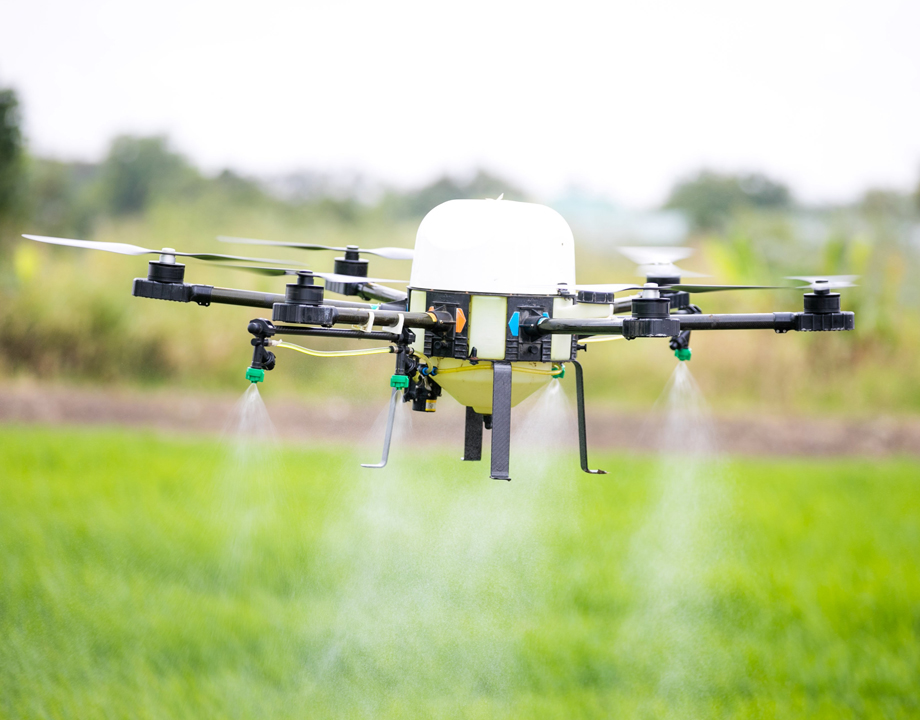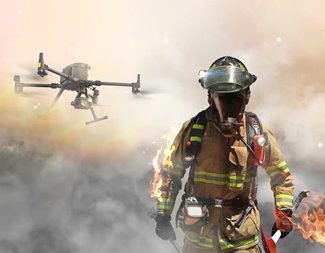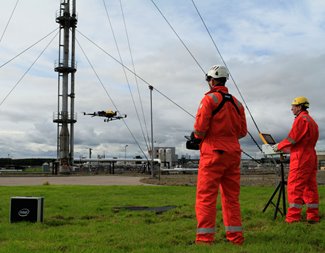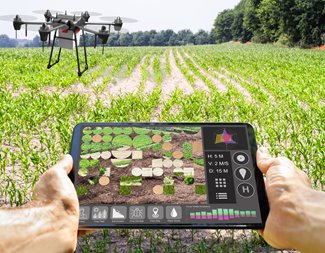9 AI Applications for Drones
9 AI Applications for Drones


Artificial intelligence helps drones become versed in many tasks. Photo: AcquahMeyer Drone Tech
Thanks largely to artificial intelligence (AI), drones are a rapidly expanding industry, with a seemingly endless list of applications. With AI, drones collect key data, adapt to what they are seeing in real time, and transmit that data to decision-makers on the ground, or can even be programmed to make those decisions themselves. Drones are an inexpensive and highly efficient way for businesses to increase productivity, reduce costs, and create a safer environment for their employees.
Here are nine creative AI applications for drones:
More for You: Smarter Drone Navigation
Reader’s Choice: Quiz: 5 Ways Drones are Used for Remote Inspections
Editor’s Pick: Drone Jet Fighter on the Rise
Mark Crawford is an engineering and technology writer in Corrales, N.M.
Here are nine creative AI applications for drones:
Firefighting
Drones are highly effective at detecting, monitoring, and even extinguishing fires. Drones provide firefighters with “big picture” details about fire size and movement, terrain, and weather conditions, cruciql information that makes it easier to deploy crews and evacuate residents. Firefighting operations are overall safer because drones can access and identify dangerous situations through heavy smoke using their sensors and cameras.Police and emergency response
Data generated by drones can be monitored by police, fire departments, and other law-enforcement agencies or emergency teams. Drones can be programmed through an operations center to collaborate and share data, enabling coordinated and real-time response. Applications include assisting emergency personnel in assessing crime scenes, storm damage, and even using thermal imaging to search for missing people.More for You: Smarter Drone Navigation
Human tracking through facial recognition
Using facial recognition technology, drones can fly over crowds looking for persons of interest. Drone cameras can also track facial gestures or emotions, which can be useful when looking for individuals who might be nervous or angry. The drone can be programmed for both known and unknown suspect recognition, to record video, and provide still image recognition.Construction sites
Construction companies use AI drones to scan and map their building sites. Real-time views, 24/7, at the site make it much easier to track construction progress and material consumption, which results in more accurate scheduling and project management. Drones are also used to identify unsafe areas, unsafe worker practices, and provide security.Reader’s Choice: Quiz: 5 Ways Drones are Used for Remote Inspections
Infrastructure inspection
Using humans to inspect infrastructure can be dangerous and time-consuming. Drones eliminate that risk by inspecting infrastructure for cracks or other physical damage, in only a matter of minutes. Software includes 3D modeling, image recognition, and analytics for environmental data, such as soil moisture content. Drones are ideal for inspecting dams, bridges, power lines, transportation, and pipelines.Emergency response
Drones can actually be the first “eyes on the ground” in response to a disaster. They can communicate with each other and share data to quickly assess an emergency situation and provide vital information to first responders. Drones can also enter collapsed structures or drop supplies to response teams and disaster victims.Smart farming
Farmers can use drones in virtually every aspect of agriculture, from monitoring weather patterns and moisture levels in the soil to determine the best time to plant. Assessing soil conditions can determine how much fertilizer is needed. Drones can spot diseased crops and even plant trees by shooting the seedpods into prepared soil at specific intervals.Military operations
Drones provide military forces with reconnaissance data and can bring them supplies, weapons, and other gear. They can also be programmed to kill enemy combatants. Published reports credited Israel with using th first-ever AI drone swarms to locate, identify, and attack Hamas militants, with no input from a human operator. The drones linked together and shared their AI data to locate and confirm their targets.Editor’s Pick: Drone Jet Fighter on the Rise
Water monitoring
Drones are being used to monitor water supplies around the world. South Korea has developed a system that uses drones and hyperspectral imagery to track the occurrence of algal blooms. Drones can also detect leaking water pipes by identifying differences in soil temperature and moisture content. Indian firm SmartTerra is using AI to identify points of water loss due to leaking infrastructure or unauthorized use.Moving Forward
Drones can access areas that are too dangerous or inaccessible for people to enter, providing images and data that keep rescuers safe and help them save lives. With the incredible design opportunities provided by the Internet of Things, drone technology is constantly evolving and will enable thousands of new opportunities across a wide variety sectors, including commercial, logistics, transportation, agricultural, and environmental, as well as personal use.Mark Crawford is an engineering and technology writer in Corrales, N.M.






